The southern Swedish capital of Malmö is at the same time a big city and a manageable city, where most sights and activities are within comfortable walking distance of each other. It offers great experiences with a wide variety of opportunities, no matter where the starting point is.
Malmö’s Danish history is expressed, among other things, through distinguished buildings from this long period; these include, for example, Malmøhus Castle, central town houses and the large and atmospheric Saint Petri Church. Some of the town houses from this time form the old Malmö, and you can enjoy some of the places in good mood at restaurants that are decorated in the cellars today.
Malmö also offers many parks such as the areas around Malmöhus Castle and Pildammsparken, which were the center of the Baltiska Exhibition in 1914. The exhibition gave the city new growth in the wake of a period from the 19th century, where beautiful buildings such as churches sprang up. The King’s Park with its extensive lawns close to the center is one of the popular excursion destinations.
From modern buildings you can see the high-rise Turning Torso, which with a swinging design is Malmö’s modern landmark. The house has been erected in the port areas that in recent decades have developed from industrial areas to active urban areas by the water.
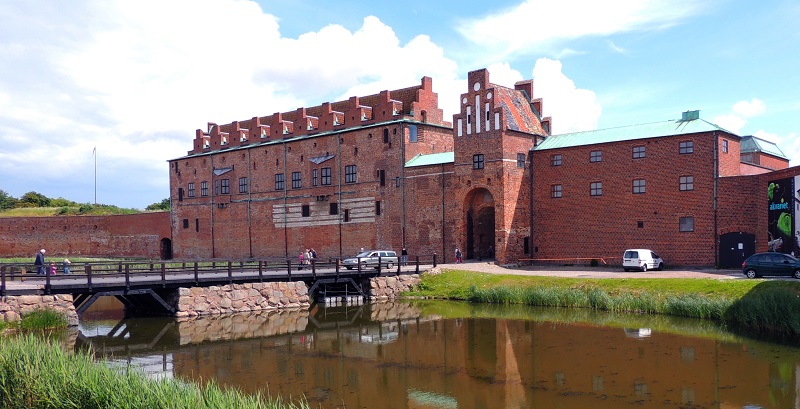
Malmöhus Castle is one of Scandinavia’s oldest Renaissance castles, and its history goes back to the Danish king Erik of Pomerania and his castle on this place, starting from year 1434. Today, the castle is a worth seeing museum, and you should also enjoy the castle park behind Malmöhus.
St Peter’s Church is the largest church in Malmö, and its construction history spans several periods during the Middle Ages. In 1269 a former church is mentioned in this place; this was built in connection with the Church of Our Lady in Copenhagen opposite the strait of Øresund.
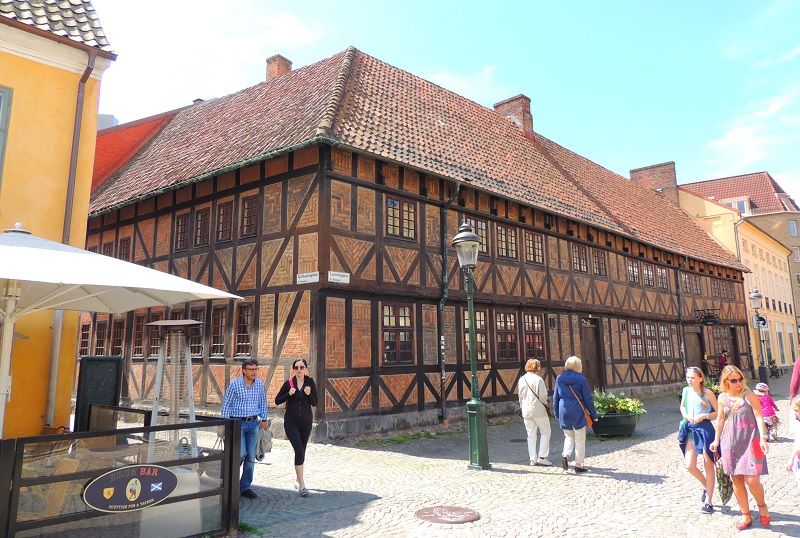
The square Lilla Torg is one of the nicest of Malmö’s squares. In season it exudes atmosphere with lots of restaurants. You can also see some beautiful buildings around the square, eg Hedmanske Gården from the 1590s and Faxeske Huset from the 1760s.
Malmö’s canals and inner harbor can be enjoyed from the water on board one of the canal cruises, which in season sail the interior of the city. A boat trip is wonderfully relaxing and gives a different perspective on the city, and the trip brings guests around to places you do not normally visit when walking.
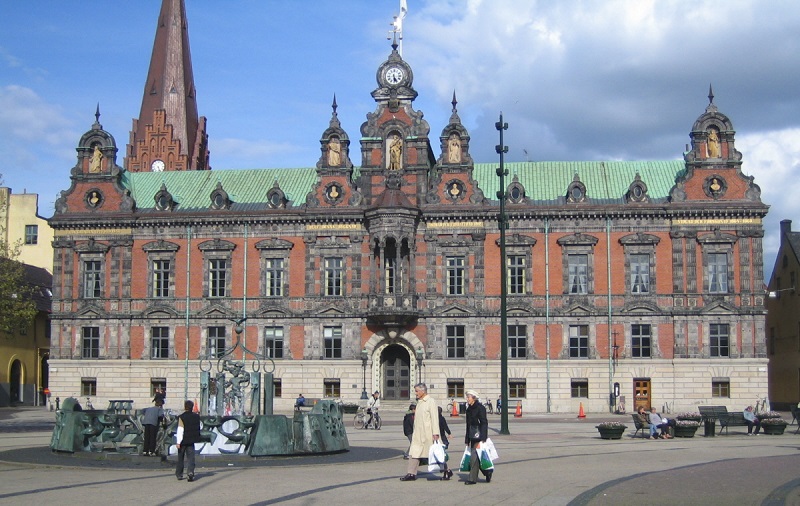
A town hall in Malmö was mentioned for the first time in 1353, where it was located just north of St. Peter’s Church. It was moved in the aftermath of the reformation in Denmark, where Mayor Jørgen Kock let the great Monastery of the Holy Spirit demolish. It provided space for the city’s current town hall from the 1540s.
This is Malmö’s town hall square and central square in the old town. It was laid out from 1538, when the city’s Monastery of the Holy Spirit was demolished. You can see the city’s beautiful town hall, the house of Jørgen Kock and an equestrian statue of Karl X Gustav on the square today.
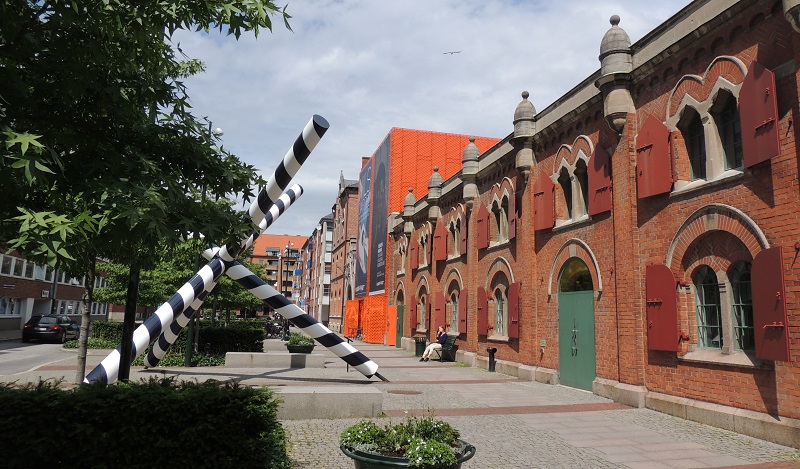
This is a museum of modern and contemporary art, where you can see a large and varied selection of works of art from the 20th century to the present day. The museum is part of the state museum of the same name, whose main department is located in Stockholm.
Slottsparken is a large park that used to be a military exercise area for the Husar Regiment stationed in Malmö. The park is located in the area around Malmöhus Castle, and it has beautiful lawns and nice walking paths.
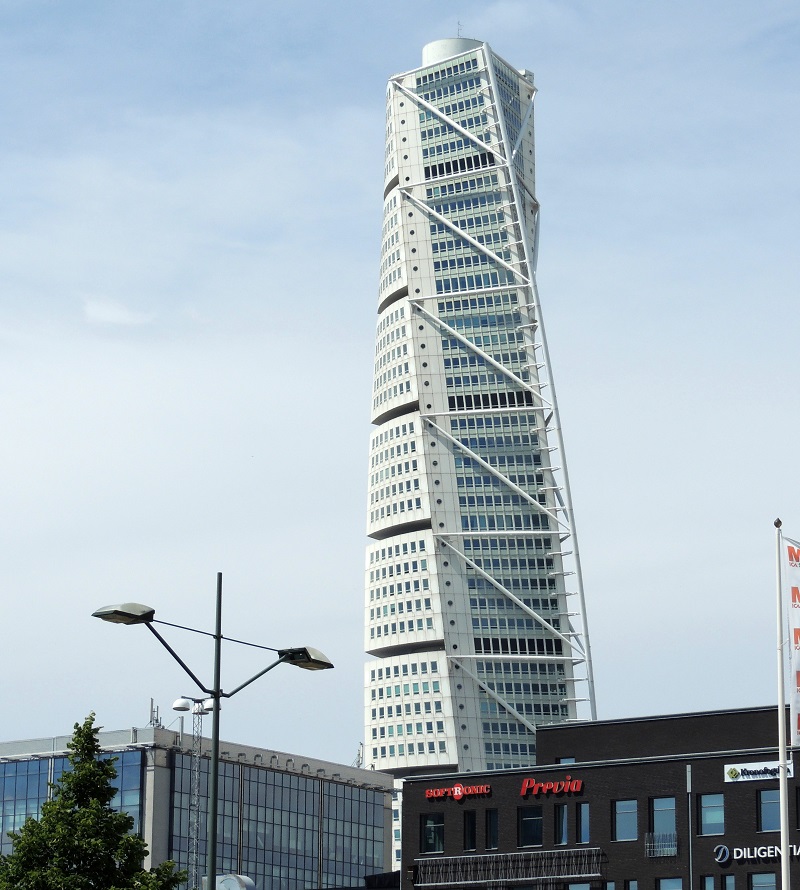
Turning Torso is a 190-meter-/623-feet-high skyscraper that, since its opening in 2005, has been Malmö’s modern landmark. The high-rise building can be seen in the urban development area of the harbor and visible from a long distance with the characteristic, twisted construction.
Pildammsparken is a lovely green area with lawns and plantings by the beautiful lake of the place. Historically, the ponds in the park were Malmö’s drinking water reservoir, and the park as such was laid out in 1914 in connection with the Baltic Exhibition held that year.
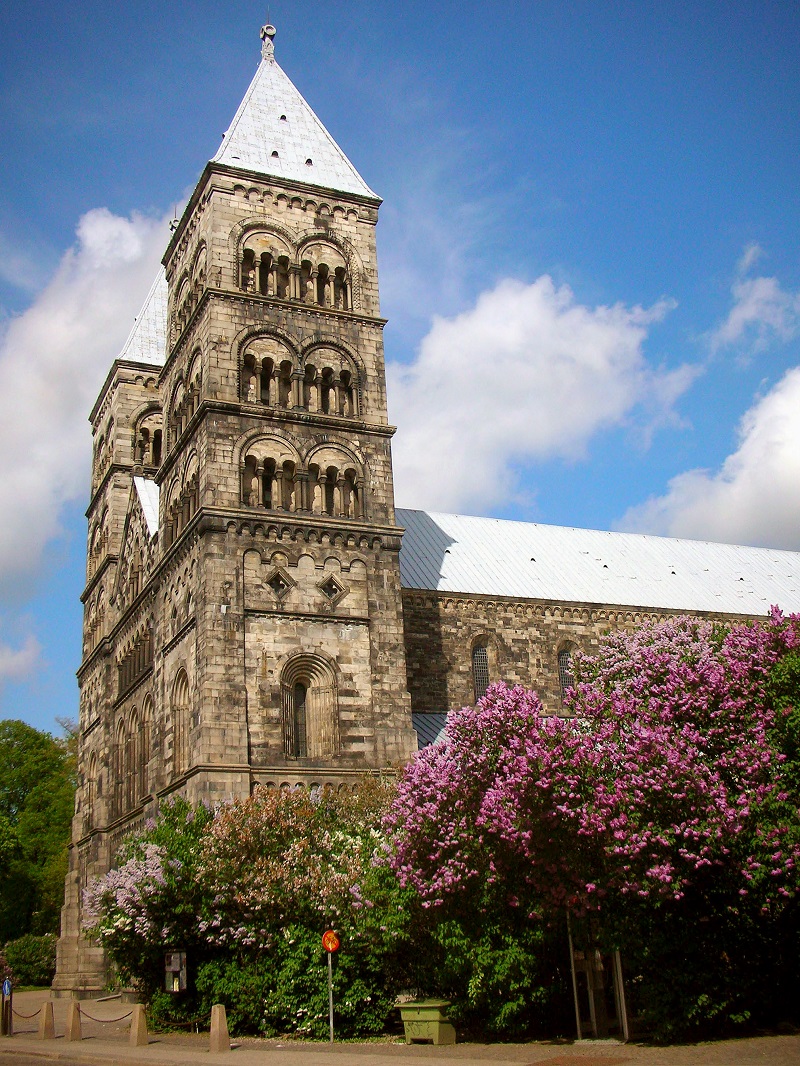
The city of Lund is historically interesting, and it is one of present-day Sweden’s oldest cities. It was founded as a market town in the late 900s and is not least known for its great cathedral.
Jakriborg is one of the most different and surprising sights in the area of Malmö. It is a district in the small town of Hjärup, which was built in the 1990s built in a medieval style known from the Hanseatic cities along the Baltic Sea.
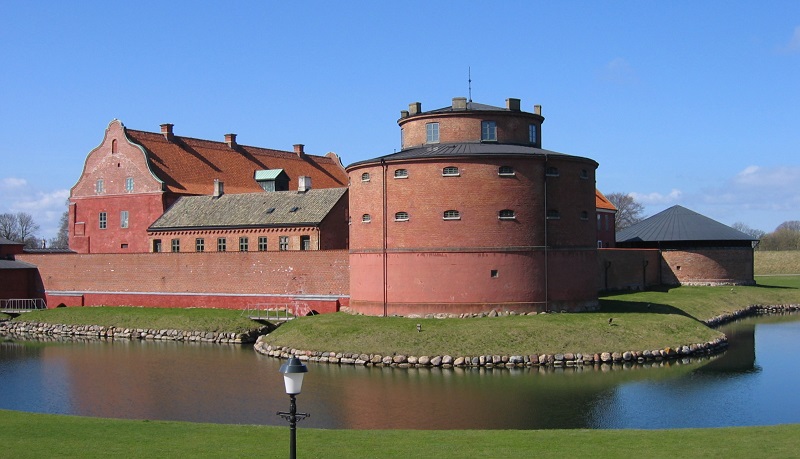
This is one of Scania’s biggest cities, and here is a nice atmosphere and several sights to see; such as the citadel from the Danish time of King Christian III. You can enjoy the view to the strait of Øresund from the city, and you can sail to the island of Hven from Landskrona’s harbor.
Helsingborg is the second largest city in Scania, and here you can indulge a fine maritime atmosphere and historic buildings such as the Kärnan castle tower and St Mary’s Church. Immediately north of the city you can see the idyllic Sofiero Castle.
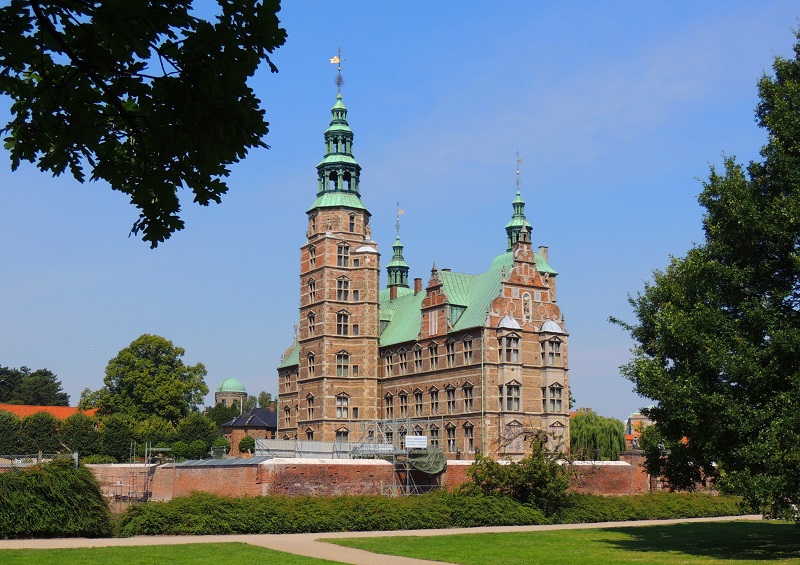
Copenhagen is Denmark’s capital, where the sights are many and the distances small. Copenhagen is also the largest city in Scandinavia and the Øresund region with an abundance of sights, such as Rosenborg Castle, Amalienborg Palace, Tivoli Gardens and Nyhavn.
Östergatan
caroli.nu
Hyllie Boulevard 19
emporia.se
Ö. Förstadsgatan 56
entremalmo.se
Stora Nygatan
hansamalmo.se
Jägersrovägen 151
jagersrocenter.se
Per Albin Hansson’s Road 40
mobilia.se
Trianglen
trianglen.com
Södergatan 15
ahlens.se
Södergatan, Östergatan, Södra Förstadsgatan, Stortorget, Lilla Torg
Sagolekplatsen
Slottsparken
Folkets Park
Amiralsgatan 35
malmofolketspark.se
Teknikens och Sjöfartens Hus
Malmöhusvägen 7A
Båtsightseeing
Norra Vallgatan
stromma.se
Tivoli Gardens
Vesterbrogade
Copenhagen, Denmark
tivoli.dk
Zoo
Roskildevej 32
Copenhagen, Denmark
zoo.dk
Den Blå Planet
Jacob Fortlingsvej 1
Kastrup, Denmark
denblaaplanet.dk
cph.dk
At the site of Malmö’s location, there was already a small peasant and church town from the mid-1100s on the present Triangle. The actual town of Malmö is believed to have been founded in the 1250s as a fortified berth of Archbishop Jacob Erlandsen, who resided in Lund about 20 kilometers northeast of here. The original name of the settlement was Malmhaug, which means the ore mound, and the town was located on church lands away from the early peasant town.
Over time, the strategically well-located city developed, and in the 1400s, Malmö had developed into one of Denmark’s most important and largest cities. About 5,000 people lived here, and the Hanseatic League regularly traded in the city’s markets. It was not least Øresund’s rich herring fishing that was the city’s major source of income.
It was also in the 1400s that Malmö got his city coat of arms. It happened in 1437, when Erik of Pomerania awarded it in the form of two letters. The Griff still minted the city’s weapons, and it came from the king’s own coat of arms from Pomerania.
Shortly before, in 1434, a citadel had been established south of Malmö itself; it is the current Malmøhus. Malmöhus was supplemented by a number of other defense works that made it the most fortified in present-day Sweden.
In the 16th century Protestantism came to Malmö early. The Reformation broke through in the years 1527-1529, making the city one of the first in Scandinavia to become acquainted with Martin Luther’s theses. It was Claus Mortensen who began to preach Luther’s words, and Malmö thus became the start of the Reformation in Lund’s diocese.
The Civil War-like County’s feud raged in Denmark after King Frederick Is died in 1533. Malmö was in line with Copenhagen on Christian II’s side against the deployment of Christian III; the city feared, among other things, the swelling of the nobility and the re-introduction of Catholicism. After the time of the feud in the years 1534 to 1536, Malmö accepted Christian III and achieved his goals by being able to choose his own priests within the Protestant faith and to abstain from noble rule.
1600s became the great time of the upheaval in Malmö. In the summer of 1644, Sweden besieged the city, which repeated itself the following year; both times without major consequences. However, they came with the Peace in Roskilde in 1658, when Denmark had to relinquish the parts of Skåne, Halland and Blekinge, and with them also Malmö. Later in the same century, Denmark tried to recapture not least Skåne, but the month-long siege of the Skåne capital in 1677 ended without success, and Malmö remained Swedish.
At the beginning of the 1700s there were about 2,300 inhabitants in Malmö, but this figure dropped to around 1,500 in the first decades of the century. This was due to both the plague epidemics and the loss of wars that King Charles XII dealt with himself and the country. The 18th century, however, ended with increasing importance and thereby a greater relocation, as a modern port was built here.
Industrialization came to Malmö in the 19th century, as was the case in many other places in Europe. One of the major industries was shipbuilding. In 1840, the Kockums yard was opened and it became one of the largest yards in the world. The railway soon underpinned Malmö’s position, opening to Lund in 1856. The following years, Södra Stambanan was opened, and via 483 kilometers and the city of Katrineholm it connected with the capital Stockholm.
Several industries moved to the city, growing rapidly through the century. By 1870, Malmö had grown to become Sweden’s third largest city; only Stockholm and Gothenburg were now larger, and by the end of the 19th century about 60,000 lived in the southern Swedish city.
In the decades around 1900, much was built in Malmö, and many larger properties were opened up. Office and residential buildings, churches, a larger railway station and a new central post office are just a few examples from this time.
The Baltic Exhibition was held in the summer of 1914, and it was the largest event in Malmö’s history. Sweden, Denmark, Germany and Russia participated, and the gates were open from May 15 to October 4. 850,000 guests visited the site. The exhibition was an industrial fair, but there was also a part with agriculture and one with art, and there were also music and sports competitions. There were rides and restaurants in the crowd.
Many industries also shot up these years in the city, which by about 1900 had passed Norrköping in population and thus became Sweden’s third largest city. Throughout the 1900s, the Kockums yard was the most well-known workplace in the city, and the company’s large crane was a symbol of the working town.
The interwar period was also a period of growth despite depression and financially tight conditions. Malmo’s airport, Bulltofta, was one of the construction works during these years. After World War II, growth continued, and many new suburbs were constructed and erected. Several major events also came to the city, which was among other things one of the Swedish host cities at the 1958 World Cup.
At the end of the 20th century Malmö first negatively impacted. There was a recession in the country in the 1970s, which led to many business closures and rising unemployment. The former industrial spearhead in the city, the Kockums yard, also had to close over the years, and the downward spiral of declining population continued until the mid-1990s, when a major revitalization of the city was initiated. In the midst of the worst crisis in the early 1990s, however, a popular party came to town in the form of a host role for some matches at the 1992 European Football Championships.
In 1998, a new university was opened on Kockum’s former shipyard, and two years later the Øresund Bridge could be opened south of the city. With it, the road to Denmark’s capital and Scandinavia’s largest city, Copenhagen, was established, and since then the cities along with the upland have developed as the Øresund region. The former port areas of Malmö have been greatly expanded in recent years, and in 2005 the characteristic building Turning Torso was inaugurated as the city’s modern landmark and a symbol of the progressive and modern Malmö that characterizes the city today.
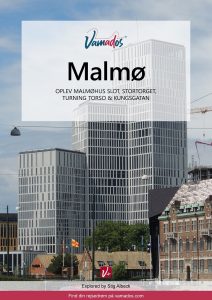
Overview of Malmö
The southern Swedish capital of Malmö is at the same time a big city and a manageable city, where most sights and activities are within comfortable walking distance of each other. It offers great experiences with a wide variety of opportunities, no matter where the starting point is.
Malmö’s Danish history is expressed, among other things, through distinguished buildings from this long period; these include, for example, Malmøhus Castle, central town houses and the large and atmospheric Saint Petri Church. Some of the town houses from this time form the old Malmö, and you can enjoy some of the places in good mood at restaurants that are decorated in the cellars today.
About the travel guide to Malmö
Number of tours: 5 tours in the city + tours in the surrounding areas
Pages: 40
Published: 2019
Author: Stig Albeck
Publisher: Vamados.dk
Language: Danish
ISBN: 978-87-93329-29-4
About the travel guide The travel
guide to Malmö gives you an overview of the sights and experiences in the Swedish city. Read about top sights and other sights, and buy a travel guide with tour suggestions and descriptions of all the city’s major churches, monuments, mansions, museums, etc.
Malmö is waiting for you, and at vamados.dk you can also find cheap flights and good deals on hotels for your trip. You just select your travel dates and then you get flight and accommodation suggestions in and around the city.
Read more about Copenhagen and Denmark
Buy the travel guide
Click the “Put in cart” button to buy the travel guide. You will then be taken to the payment, where you enter the purchase and payment information. After completing the wizard payment, you will immediately receive a receipt with a link to download your purchase. You can download the wizard immediately or use the download link in the email later.
Use the travel guide
When you buy the travel guide to Malmö, you get the book online so you can have it on your mobile, tablet or computer – and of course you can choose to print it. Use the maps and tour suggestions and you will have a good and content-rich journey.
Malmöhus Castle • Pildamm Park • City Hall • St. Peter’s Church • Turning Torso

Overview of Malmö
The southern Swedish capital of Malmö is at the same time a big city and a manageable city, where most sights and activities are within comfortable walking distance of each other. It offers great experiences with a wide variety of opportunities, no matter where the starting point is.
Malmö’s Danish history is expressed, among other things, through distinguished buildings from this long period; these include, for example, Malmøhus Castle, central town houses and the large and atmospheric Saint Petri Church. Some of the town houses from this time form the old Malmö, and you can enjoy some of the places in good mood at restaurants that are decorated in the cellars today.
About the travel guide to Malmö
Number of tours: 5 tours in the city + tours in the surrounding areas
Pages: 40
Published: 2019
Author: Stig Albeck
Publisher: Vamados.dk
Language: Danish
ISBN: 978-87-93329-29-4
About the travel guide The travel
guide to Malmö gives you an overview of the sights and experiences in the Swedish city. Read about top sights and other sights, and buy a travel guide with tour suggestions and descriptions of all the city’s major churches, monuments, mansions, museums, etc.
Malmö is waiting for you, and at vamados.dk you can also find cheap flights and good deals on hotels for your trip. You just select your travel dates and then you get flight and accommodation suggestions in and around the city.
Read more about Copenhagen and Denmark
Buy the travel guide
Click the “Put in cart” button to buy the travel guide. You will then be taken to the payment, where you enter the purchase and payment information. After completing the wizard payment, you will immediately receive a receipt with a link to download your purchase. You can download the wizard immediately or use the download link in the email later.
Use the travel guide
When you buy the travel guide to Malmö, you get the book online so you can have it on your mobile, tablet or computer – and of course you can choose to print it. Use the maps and tour suggestions and you will have a good and content-rich journey.

A town hall in Malmö was mentioned for the first time in 1353, where it was located just north of St. Peter’s Church. It was moved in the aftermath of the reformation in Denmark, where Mayor Jørgen Kock let the great Monastery of the Holy Spirit demolish. It provided space for the city’s current town hall from the 1540s.
This is Malmö’s town hall square and central square in the old town. It was laid out from 1538, when the city’s Monastery of the Holy Spirit was demolished. You can see the city’s beautiful town hall, the house of Jørgen Kock and an equestrian statue of Karl X Gustav on the square today.

This is a museum of modern and contemporary art, where you can see a large and varied selection of works of art from the 20th century to the present day. The museum is part of the state museum of the same name, whose main department is located in Stockholm.
Slottsparken is a large park that used to be a military exercise area for the Husar Regiment stationed in Malmö. The park is located in the area around Malmöhus Castle, and it has beautiful lawns and nice walking paths.

Turning Torso is a 190-meter-/623-feet-high skyscraper that, since its opening in 2005, has been Malmö’s modern landmark. The high-rise building can be seen in the urban development area of the harbor and visible from a long distance with the characteristic, twisted construction.
Pildammsparken is a lovely green area with lawns and plantings by the beautiful lake of the place. Historically, the ponds in the park were Malmö’s drinking water reservoir, and the park as such was laid out in 1914 in connection with the Baltic Exhibition held that year.
Similar to Malmö Travel Guide
There are no listings matching your search.
Reset